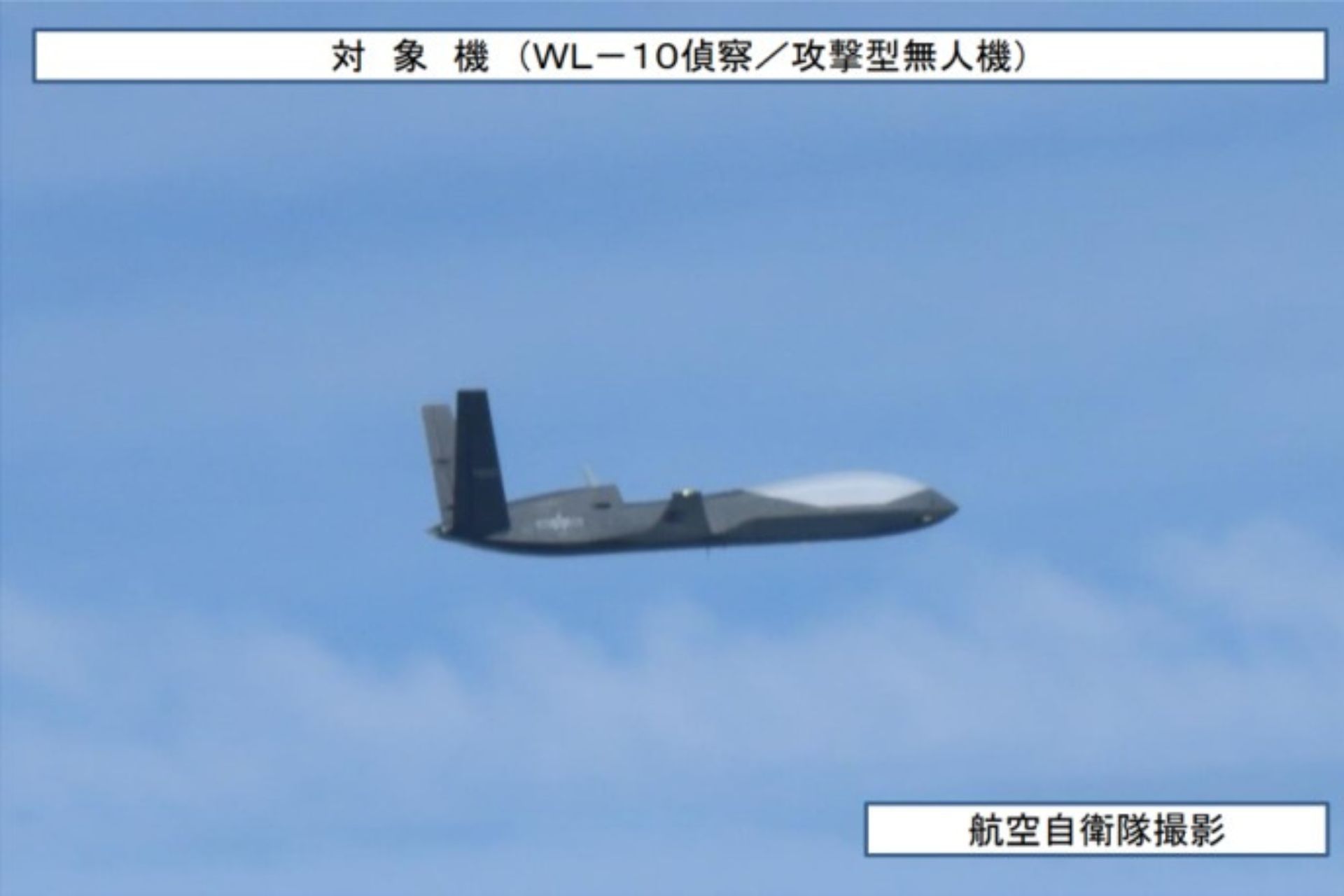Breaking News
Chinese UAV Intrudes Vietnamese Airspace in Response to Joint Exercises With Philippines.
On August 7, 2024, a Chinese military drone flew along the Vietnamese coast, marking the second known incident of this kind within the month, according to publicly available tracking data. The drone, identified as a Wing Loong-10 unmanned aerial vehicle (UAV), took off from China's Hainan Island and entered Vietnam's exclusive economic zone (EEZ), flying along the coastline for approximately 800 kilometers before turning back near Phan Rang province.
Follow Army Recognition on Google News at this link

Image of the WL-10/WZ-10 Unmanned Aerial Vehicle flying over the East China Sea on May 27th 2023 (Picture source: Japan MoD)
Data from Flightradar24, a Swedish flight tracker, revealed that the UAV used the call sign 00CA6181 and HEX code 783132, suggesting it was the same WZ-10 aircraft spotted on August 2 near the Vietnamese coast. The WZ-10 was observed from 160 km to 170 km from Cam Ranh, a strategic deep-water port and an important naval base for Vietnam.
An EEZ is a maritime area extending 200 nautical miles from a country's coast, where the airspace above is considered international, but part of it falls within Vietnam's flight information region. Despite the drone's presence, the Vietnamese government has not commented on the recent sightings of Chinese drones. This incident coincides with the visit of a Vietnamese coast guard ship to Manila, where it is set to participate in the first joint exercises with the Philippine coast guard, highlighting ongoing territorial disputes with China in the South China Sea.
The WZ-10, also known as the Wing Loong-10, Wind Shadow, or Cloud Shadow, is a high-altitude long-endurance (HALE) unmanned aerial vehicle developed by Chengdu Aircraft Industry Group in China. Introduced in 2020, this UAV is designed for various reconnaissance and combat missions. It has a wingspan of 20 meters, a length of 9 meters, and a height of 3.66 meters. The WZ-10 is powered by a single WP-11C or ZF850 engine, providing 9.8 kN (2,200 lbf) of thrust, allowing a cruise speed of 620 km/h and a service ceiling of 15,000 meters. With an endurance of 20 hours, it is capable of long-duration missions.
The WZ-10 can be equipped with various armaments, including Blue Arrow air-to-surface missiles, light cruise missiles, GPS-guided CS/BBM3 (YL-12) bombs, and GB-4 precision-guided bombs, enhancing its strike capabilities. This versatility makes the WZ-10 a significant asset for reconnaissance and combat roles. Information on the exact number in service is not available, but its deployment reflects China's growing emphasis on advanced UAV technologies for military applications.
The Japanese Ministry of Defense reported intercepting a WZ-10 UAV near Okinawa for the first time on May 27, amid rising tensions in the East China Sea. Jyh-Shyang Sheu, a military expert at Taiwan's Institute for National Defense and Security Research, noted that the WZ-10, as an unmanned combat aerial vehicle, has the potential to carry missiles. Sheu suggested that the deployment of such drones serves both reconnaissance and political signaling purposes, acting as a tool for gray zone tactics aimed at coercing without resorting to war.
China's use of drones for reconnaissance and political signaling is not new. In September 2022, China sent UAVs almost daily to Kinmen Island in the Taiwan Strait. Sheu highlighted that the drones sent to Taiwan varied in type and that China, being one of the largest drone manufacturers in the world, is increasingly using UAVs for strategic purposes.
In addition to drones, China has also intensified violations of its neighbors' airspace using various types of aircraft, including fighter jets, spy planes, and reconnaissance aircraft. For example, in November 2021, Chinese fighter jets repeatedly entered Taiwanese airspace, prompting Taiwan to deploy its own aircraft to intercept and escort the intruders. Furthermore, Chinese reconnaissance planes have been regularly reported flying over contested waters in the South China Sea, causing tensions with the Philippines, Vietnam, and other neighboring nations.
These aggressive aerial maneuvers, combined with the increasing use of UAVs, illustrate China's strategy to bolster its influence and assert its sovereignty over contested areas, while exerting constant political pressure on its neighbors.


























